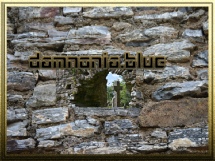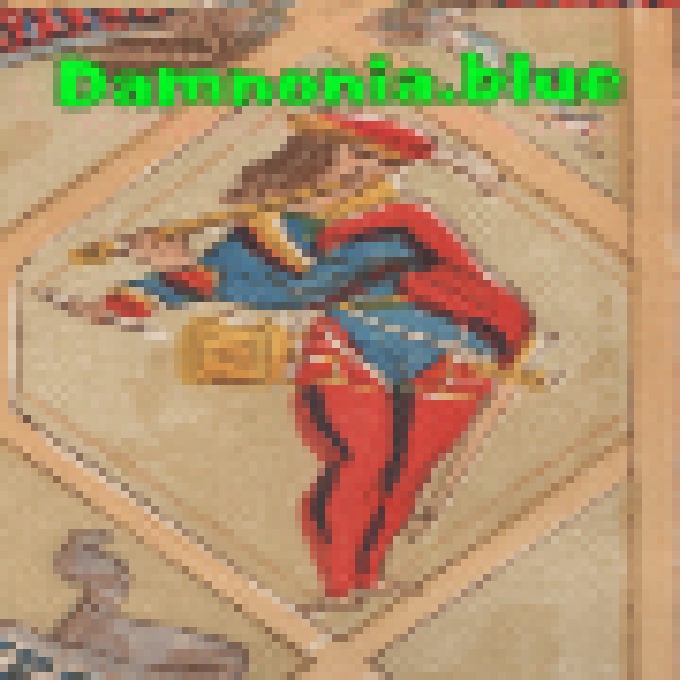

V o r t i g e r n :
T y r a n t K i n g 167
V ictoria. We might have heard a story about Nelson putting a telescopeto his blind eye, so that he could ignore a signalled order. We might
have heard the bards reciting ‘Not a drum was heard, n o t a funeral note,
as his corse to the ram part we hurried.’ B ut the N apoleonic wars, to
w hich these fragments o f oral tradition relate, w ould have no real place
in our know ledge o f history. O ral tradition is a living art form and only
becom es relatively stable w hen it is eventually captured in w ritten form .
History, in any continuous form , w ould extend no m ore than a hundred
years or so before o u r ow n tim e. Earlier traditions w ould have been
progressively m odified or lost. R e tu rn in g to the tim e o f Gildas, in the
sixth century, real continuous history w ould have been restricted to the
troubles o f the p o st-
w ould have been a distant and hazy m em ory, associated w ith the decaying rem ains o f the cities and tow ns, and anything earlier w ould have
consisted o f no m ore than disconnected legends and songs.
V o rtig e rn ’s c h ie f claim to a place in th e h isto ry o f th e W essexS to n eh en g e Ill-
Geoffrey o f M o n m o u th , o f his involvem ent (on the losing side) in the
disaster at the C loister o f A m brius, w hich we have already considered
in connection w ith the end o f Stonehenge.
W h ile a c c e p tin g th a t th e W essex C u ltu re and th e g reat age o f
Stonehenge together do no t am ount to a full-
none the less instructive to consider a civilization m odel for their developm ent. T he same m ethod may now be used to interpret the end o f the
age. For a hum an death, the causes may be considered under three main
headings: natural causes, m urder, suicide. W hat we (are discussing is the
cause o f death o f a culture. Burgess considered m urder by invasion and,
finding no evidence for any invasion, decided to settle for death by natural causes. For some reason, the possibility o f suicide was never m entioned, though Toynbee found evidence for this in the deaths o f many
civilizations.
T oynbee traced the dem ise o f civilizations to ‘times o f troubles’,
w hich often preceded the ultimate end by many centuries. Thus Ins
Hellenic civilization, which included the Koman Empire, had its time o f
troubles in the last four centuries he, starting with the outbreak oi the
Peloponnesian War in 431 iu The establishment oi tlu Koman Einpue
arrested the decay of the Hellenic civilization Ini srveial (cnturies, but
K I N G A R T H U R ’ S P L A G E IN P R E H I S T O R Y
Saxons was taken from the K entish C hronicle (in Cantia); the stories o f
his family life and death were abstracted from the Life of St Germanus (a
Sancto Germano); and the story o f the fatherless boy and the magicians
was an entirely separate unit, the Tale of Emrys (de Ambrosio). In an
attem pt to com bine these different elem ents into an intelligible history,
N ennius em ployed the technique know n today as ‘cut and paste’ and,
fortunately for us, preserved the identity o f the pieces. Thus we have
the follow ing sequence: (i) Kentish Chronicle, Part 1; (ii) Life o f Saint
G erm anus, P a rt 1; (iii) K entish Chronicle, P art 2; (iv) Life o f Saint
Germanus, Part 2; (v) Tale of Emrys; (vi) Kentish Chronicle, Part 3; (vii) Life
of Saint Germanus, Part 3.
H o w m any Vortigerns were there and w hen did they live? W hich
w ere genuine historical characters and w hich fabulous? N ennius, w riting m ore than four-
w orked on the assum ption that there was only one V ortigern. Geoffrey
o f M o n m o u th , three centuries later again, saw no reason to disagree
w ith him . Gildas, w ritin g m uch nearer the tim e,6 failed to m ention
V ortigern by nam e at all, just as he failed to m ention A rthur. H e did
how ever refer to a ‘p ro u d ty ran t’ w ho, w ith his council, decided to
invite the Saxons over to com bat his enem ies in the north. T he identity
o f this proud tyrant w ith V ortigern has been almost universally accepted.
In essence, he is telling the same story as the Kentish Chronicle, though
w ith a frustrating lack o f the names o f people and places.
T he identity o f V ortigern presents us w ith tw o problem s. Firstly, his
nam e is n o t really a nam e at all bu t a title, m eaning som ething like
high chief. A tw entieth-
G erm an w ord Fuhrer, simply m eaning leader, w hich H itler transform ed
into som ething so terrible that even V ortigern looks positively tam e by
com parison. Secondly, w ith the V ortigern w ho brought in the Saxons,
we reach the lim it o f any sort o f continuous history that can be based
on British sources alone. N ennius com plained that ‘the scholars o f the
island o f Britain had no skill, and set dow n no record in books’,7 and,
apart from oral tradition, Gildas, w riting about An 540, is our earliest
source.
I low much history would we know if we had no books and had to
rely entirely on wh.it our parents and grandparents told us? We would
know about the two World Wars and the British Em pire and Q ueen